Understanding Resources
Economics is a subject crucial to learners’ understanding of the world around them. The first step to becoming an informed citizen is to be aware of the socio-economic and political circumstances of the nation, to understand issues such as labour resources, food scarcity, poverty etc. However, it is not enough to learn about laws, policies, and statistics. As the foreword to the NCERT textbook mentions, what students learn in the classroom must be connected to their lives outside. Artworks help humanise the core of the issues they are learning about. Use these artworks in the classroom to help students gain new perspectives and to encourage empathy while learning about people through the lens of resources, poverty, and food scarcity.
LOOKING CLOSELY
Browse through a curated collection of images and artworks from the DAG collection that visualise aspects of social and economic circumstances.
SUGGESTED AUDIENCE
Learners in middle school and above
SUGGESTED USE
Delving into the perspectives of people from various economic conditions; sparking interest in understanding economic systems that affect learners; understanding conditions of labour through artistic representations.
Ramkinkar Baij
Untitled 1961
Watercolour and ink on paper
Chittaprosad
Humanity Dehumanised, Hungry Bengal 1943
Haren Das
With Her Property 1985
Woodcut on paper
Haren Das
At Noon 1950
Bijan Chowdhury
Untitled 2000
Mixed media on paper
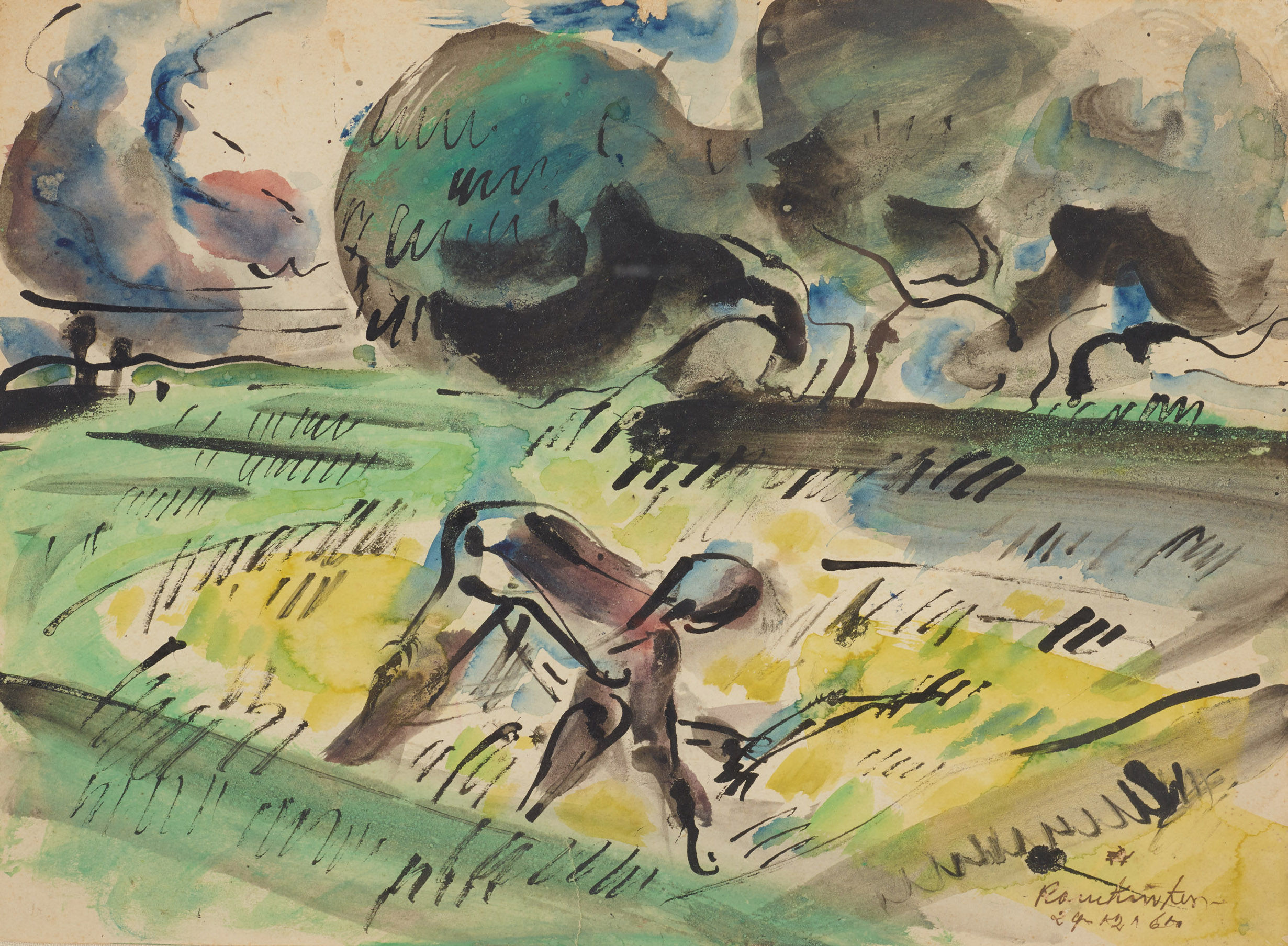
Ramkinkar Baij was a pioneer of modern Indian sculpture. His study of the Santhal tribals who lived around Santiniketan provided inspiration for his sculpture as well as painting. In this work, a lone farmer can be seen working in a field against a vast landscape made imposing through trees and clouds on the horizon. The sight he has depicted is common across rural India. However, the colours would shift according to the ecology, the type of crop, and the season. The various elements depicted in this painting the weather, the farm labourer, the vegetation all serve as a representation of the multiple aspects of the agriculture industry.
YEAR
1961
MEDIUM
Watercolour and ink on paper
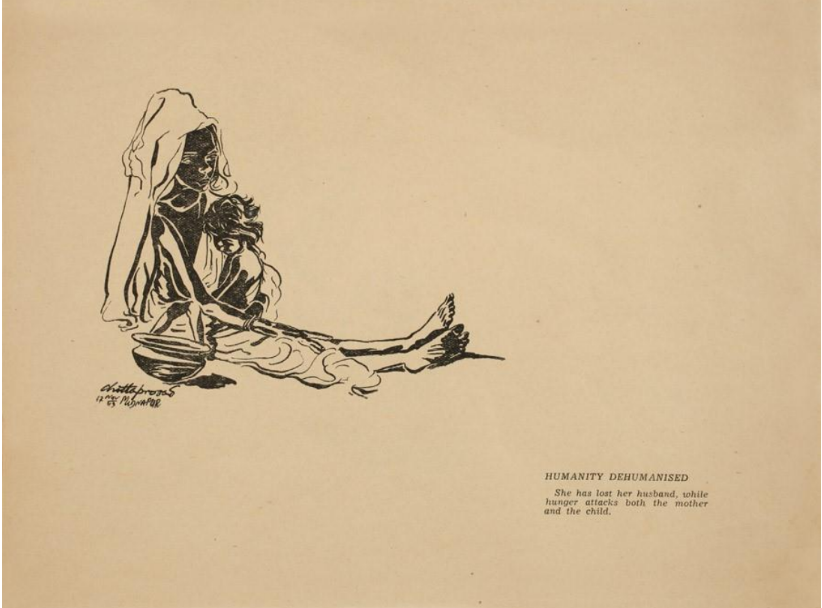
Chittaprosad is best known for his hardhitting depictions of the Bengal Famine in the 1940s. He travelled across affected regions in Bengal as an artist-reporter for the Communist Party of India (Marxist) documenting the conditions of the famine. This work is from a compilation of twenty eyewitness sketches from across the Midnapore district, published as a book 'Hungry Bengal'. Done in the mode of social realism, these sketches capture not only the physical effects of food scarcity and diseases but also provide a sense of the immense psychological trauma wreaked upon the population.
YEAR
1943
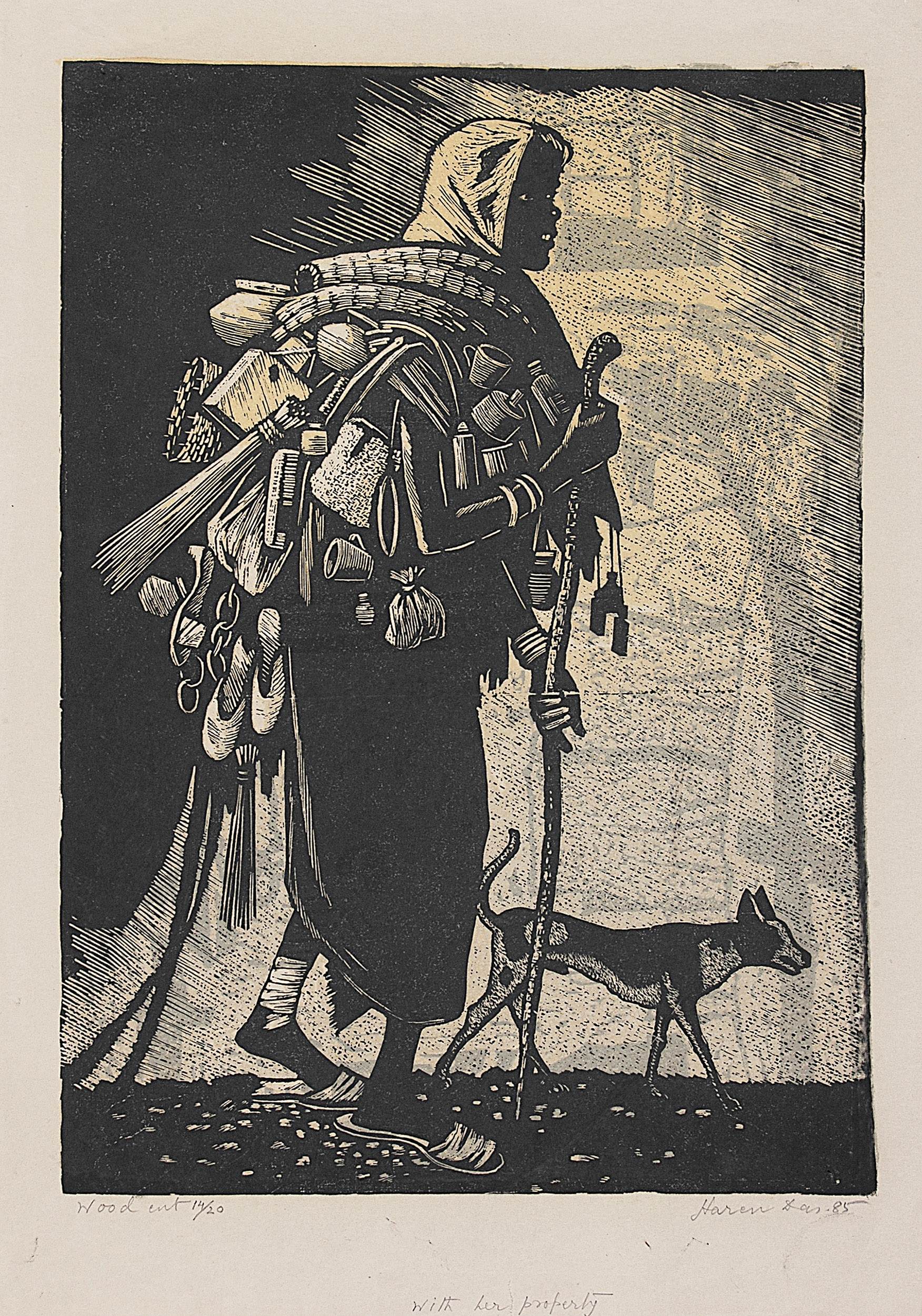
Haren Das grew up in (present day Bangladesh) and was forced to migrate due to political reason. His experience of a rural childhood and migration is often reflected in his works. In this woodcut, we see a homeless woman, dragging herself along with her belongings. Although the woman herself is shrouded in darkness, her possessions are visible in great detail. The artist's portrayal of this woman would be a familiar site to most urban dwellers, as many people who are homeless and without employment resort to informal ways of earning such as sorting through and selling discarded scrap.
YEAR
1985
MEDIUM
Woodcut on paper
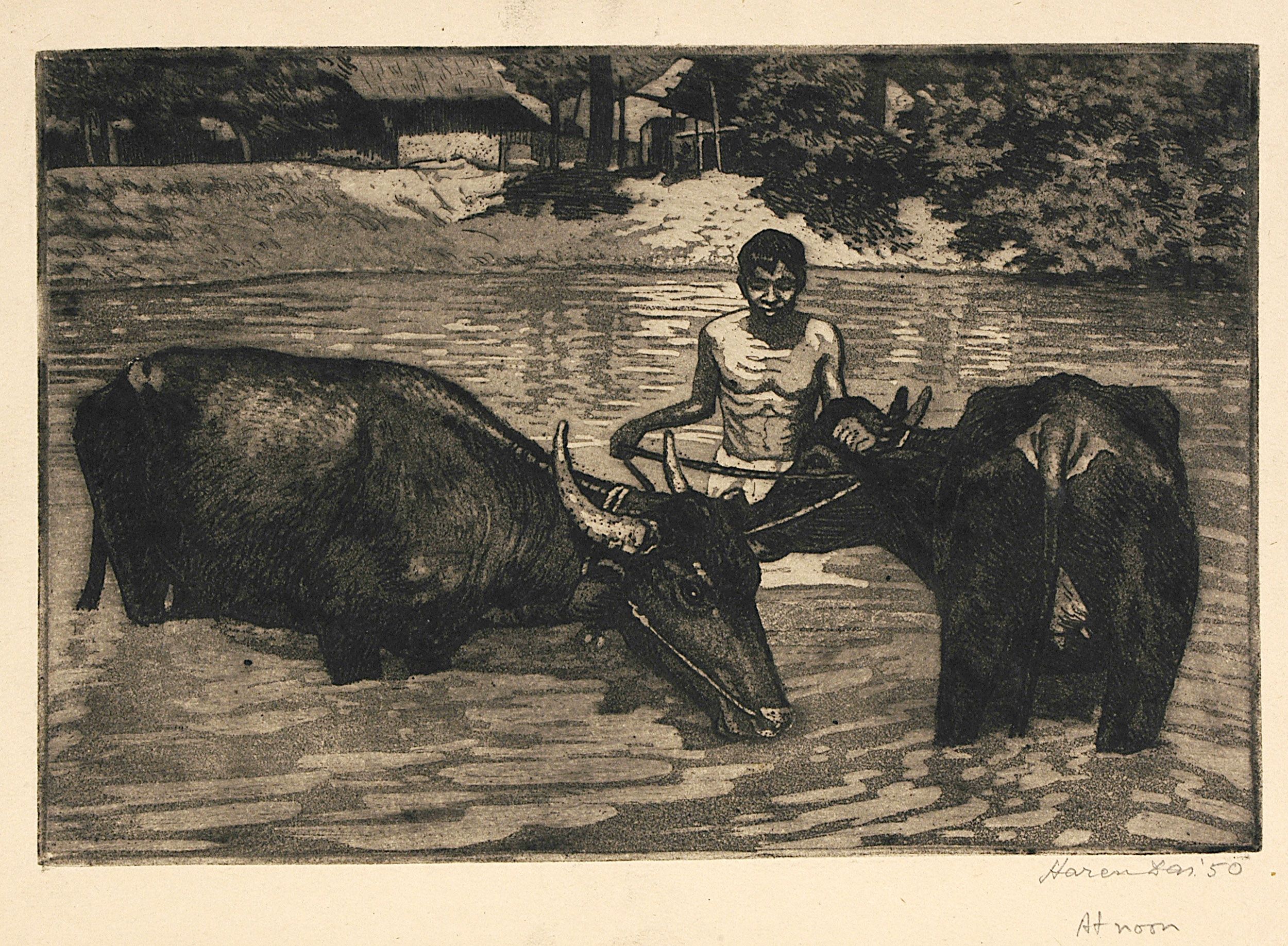
Haren Das was one of the finest printmakers in India. His works often reflect a deep identification with the rural folk of Bengal. This particular print depicts a young herder bathing his cattle. The title, At Noon, suggests that this task is perhaps one that is marked for a specific time in the routine of the day. The artist’s depictions of everyday scenes paint a vivid picture of rural life in the minds of the viewer, almost making one wonder what the rest of the day in the life of this young boy looks like.Tipu’s corpse, Henry Singleton returned to a more neoclassical composition and mood. Once safely dead, Tipu could be associated pictorially with the heroes of classical antiquity affording some dignity, being shown as a man who deserves to be mourned. The body, laid out on a couch, is surrounded by wailing women and children, whose hysterical gestures raise futile protests against the event, even as the stillness and solemnity of serious-minded men confirm it as certain.
YEAR
1950
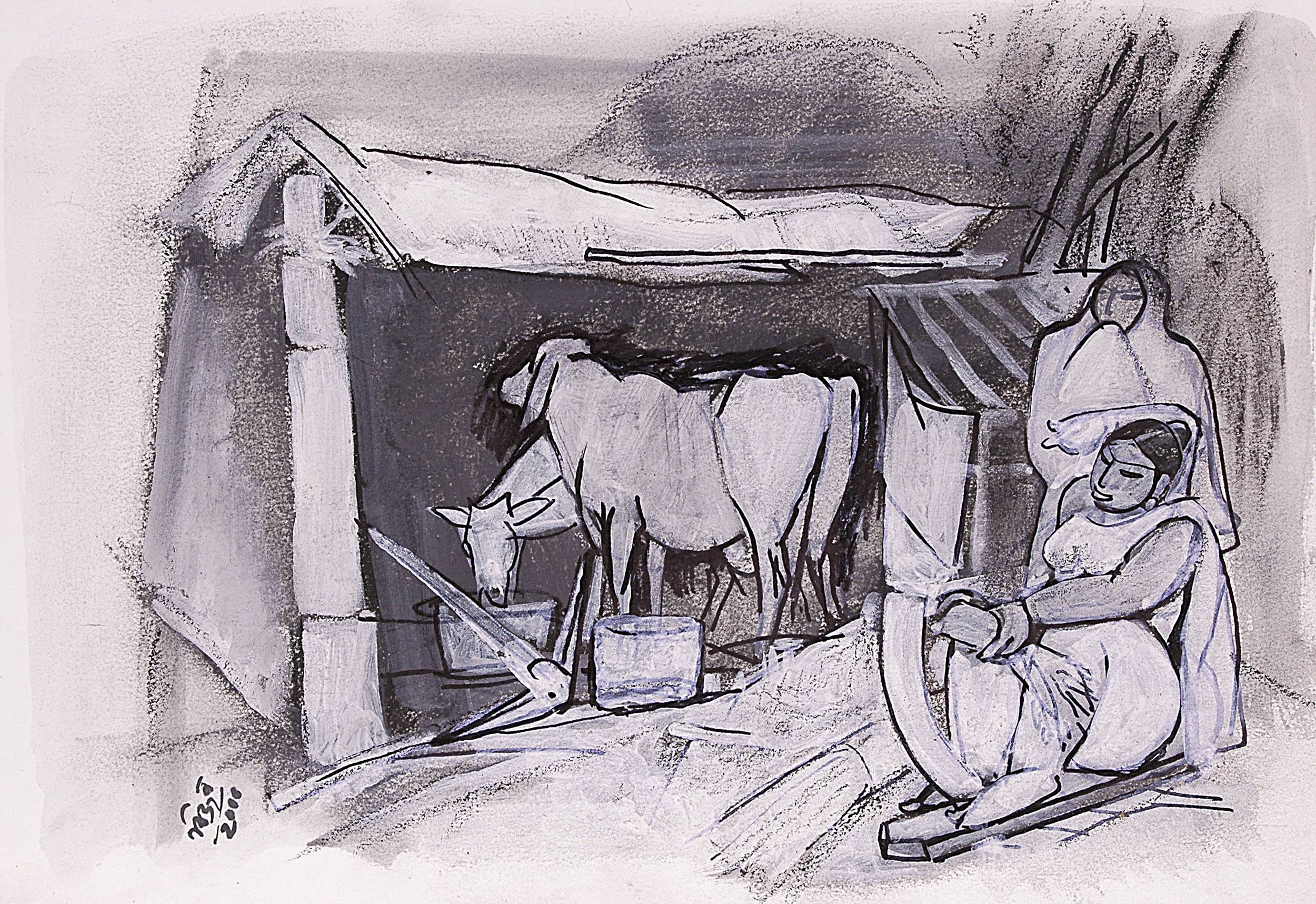
Bijan Chowdhury was famous for his paintings on the political turbulence of the 60s and the 70s in Calcutta. This work by him stands out in its peaceful rendering of everyday life. The artist depict a mundane moment in a cattle-owning household with two women engrossed in daily tasks. The woman in the foreground is working on a boti, a cutting implement with a curved blade attached to a wooden platform, very commonly used as a kitchen tool in India for cutting fish, vegetables, meat etc. The artist’s portrayal of this extremely common homely scene of women at ’work’ can be seen as an exploration of the many aspects of domestic labour which upholds a household.
YEAR
2000
MEDIUM
Mixed media on paper
|
|
|
|
Thank You for downloading!
WE HOPE YOU FIND THE RESOURCE PACKS USEFUL
For any further queries on resources for learners, write to us at dag.museums@dagworld.com


